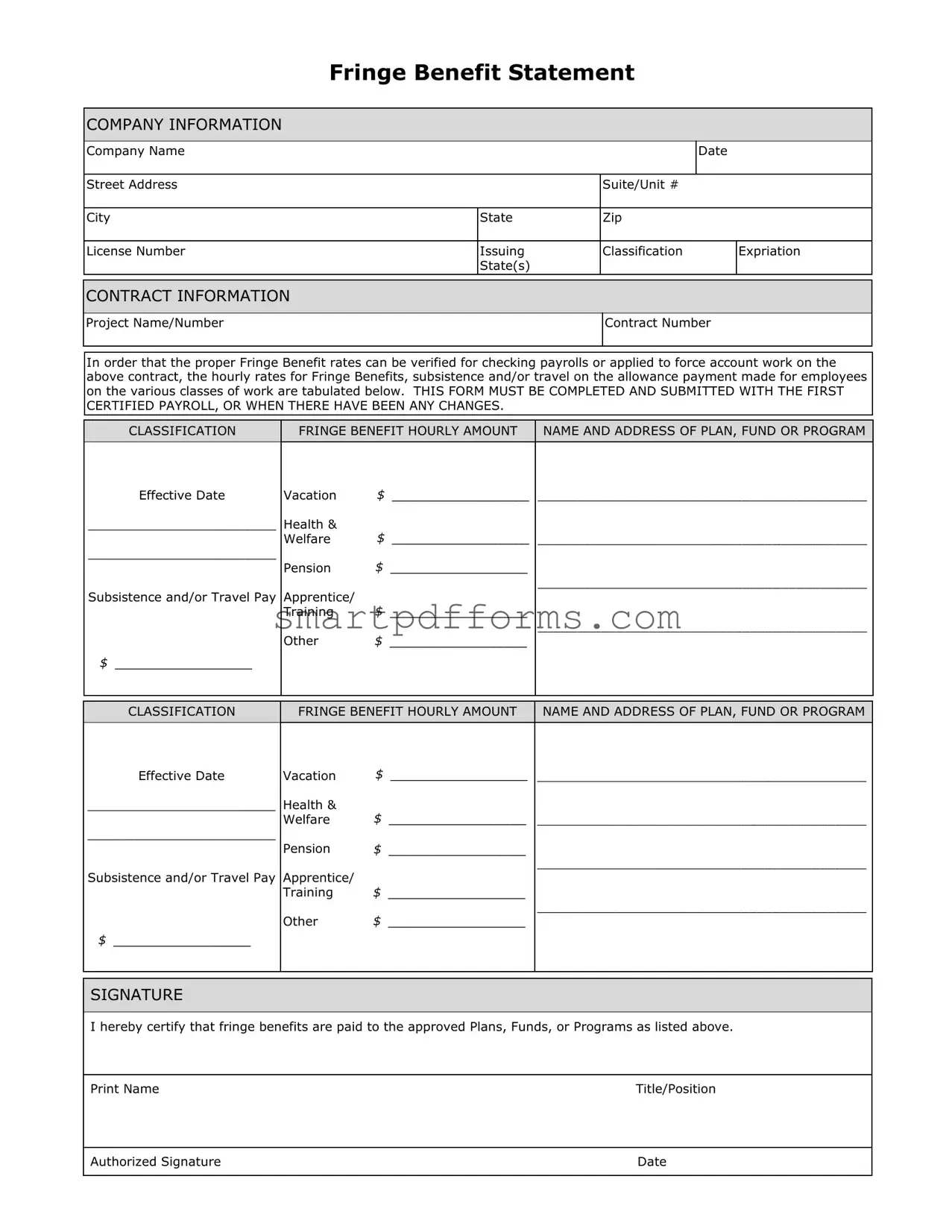When navigating the complexities of employment compensation, understanding the nuances of the Fringe Benefit form becomes crucial. This document plays an essential role in outlining additional compensation beyond regular salary or wages, encompassing elements such as health insurance, retirement plans, and paid time off, among others. Given its significance, both employers and employees must approach this form with thorough attention to detail, ensuring that all provided benefits are accurately documented and in compliance with applicable tax regulations. The task involves not just a meticulous documentation of benefits but also a clear understanding of which perks are considered taxable and how they impact overall compensation. With the potential to influence employee satisfaction and financial well-being significantly, the preparative process involves a careful review of all benefits, a keen understanding of legal requirements, and an ongoing commitment to transparency and fairness in compensation practices. By spotlighting these major aspects, individuals and organizations can navigate the intricacies of fringe benefits more effectively, fostering a more supportive and equitable work environment.

